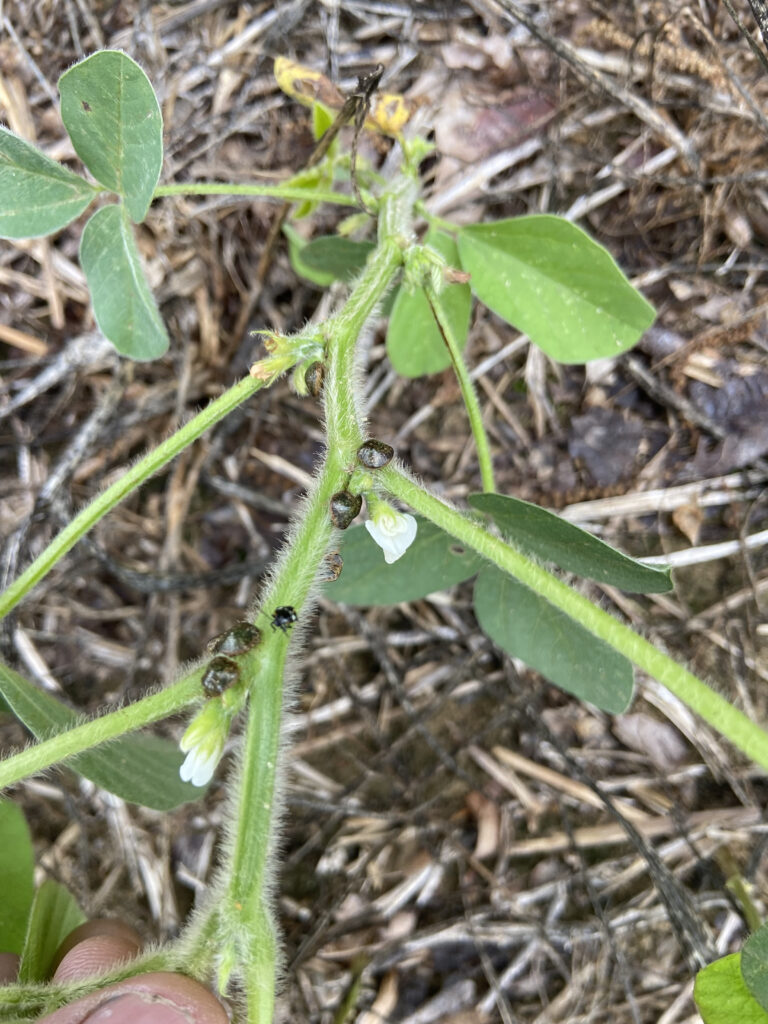Scout Soybeans for Kudzu Bug
go.ncsu.edu/readext?867161
en Español / em Português
El inglés es el idioma de control de esta página. En la medida en que haya algún conflicto entre la traducción al inglés y la traducción, el inglés prevalece.
Al hacer clic en el enlace de traducción se activa un servicio de traducción gratuito para convertir la página al español. Al igual que con cualquier traducción por Internet, la conversión no es sensible al contexto y puede que no traduzca el texto en su significado original. NC State Extension no garantiza la exactitud del texto traducido. Por favor, tenga en cuenta que algunas aplicaciones y/o servicios pueden no funcionar como se espera cuando se traducen.
Português
Inglês é o idioma de controle desta página. Na medida que haja algum conflito entre o texto original em Inglês e a tradução, o Inglês prevalece.
Ao clicar no link de tradução, um serviço gratuito de tradução será ativado para converter a página para o Português. Como em qualquer tradução pela internet, a conversão não é sensivel ao contexto e pode não ocorrer a tradução para o significado orginal. O serviço de Extensão da Carolina do Norte (NC State Extension) não garante a exatidão do texto traduzido. Por favor, observe que algumas funções ou serviços podem não funcionar como esperado após a tradução.
English
English is the controlling language of this page. To the extent there is any conflict between the English text and the translation, English controls.
Clicking on the translation link activates a free translation service to convert the page to Spanish. As with any Internet translation, the conversion is not context-sensitive and may not translate the text to its original meaning. NC State Extension does not guarantee the accuracy of the translated text. Please note that some applications and/or services may not function as expected when translated.
Collapse ▲A few reports are trickling in of kudzu bugs in soybeans as they usually do this time of year. One grower reported levels above threshold near a ditch bank in Beaufort County (likely with kudzu growing on it). Johnston County agent, Tim Britton (who constantly has boots on the ground), sent me this photo today (May 25th). Kudzu bugs have been on the rise ever since their spectacular crash 7 or 8 years ago. I urge folks to start scouting soybeans now.
Kudzu bugs prefer kudzu as a host and will usually show up in soybeans near kudzu patches, if they are present, first. The adults have a preference to infest earlier planted soybeans, soybeans with narrower rows, and soybeans planted using conventional tillage. Check these fields first. This article has information on managing kudzu bug in the early-season, while this article covers biology and season-long management. The best product to use is bifenthrin.
I will end with a cautionary tale from the early-season kudzu bug management article that I linked to. An NC grower noticed kudzu bugs on the edge of his April-planted beans during May 2012. They had not yet infested the interior portions of the field. He opted to spray. He then had to spray again in June, as the adults remigrated into the field. Additionally, sprays don’t kill eggs, so these hatched into nymphs. The grower then had to spray a 3rd time in June, as spider mites were flared in the field from the lack of beneficial insects. We want to avoid these costly situations while still preserving our yield. Don’t wait to scout, but do wait to spray until you hit the economic threshold.



